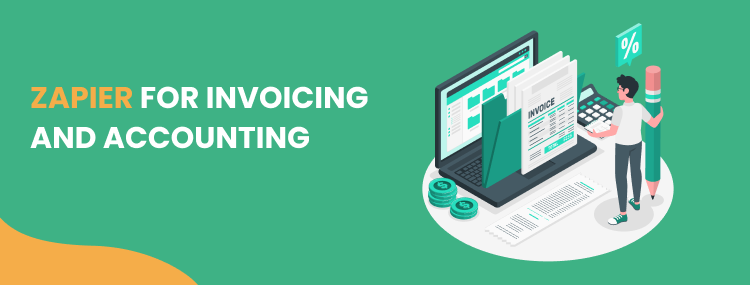Invoicing and accounting are essential aspects of managing a business, but they can often be time-consuming and prone to errors. However, with Zapier, a powerful automation platform, you can optimize and streamline these processes, enabling you to focus on what matters most—growing your business. In this article, we will explore how Zapier can revolutionize your invoicing and accounting workflows, enhancing efficiency and accuracy.
- Connect Your Invoicing and Accounting Tools: Zapier allows you to integrate various invoicing and accounting tools seamlessly. By connecting applications such as QuickBooks, Xero, FreshBooks, or Wave with your chosen invoicing tool, you can automate data synchronization, eliminating the need for manual data entry and reducing the risk of errors. Zapier supports a wide range of integrations, making it flexible and adaptable to your specific business needs.
- Automate Invoice Generation and Delivery: With Zapier, you can automate the generation and delivery of invoices, saving you considerable time and effort. Set up triggers and actions to create invoices automatically whenever specific conditions are met, such as completing a project or receiving payment. You can then choose to send invoices directly to clients via email or through your preferred communication channels, ensuring prompt and efficient delivery.
- Streamline Payment Tracking and Reconciliation: Keeping track of payments and reconciling them with your accounting software can be a tedious task. Zapier simplifies this process by automating payment tracking and reconciliation. Set up triggers to update your accounting software automatically when a payment is received, eliminating the need for manual input. This not only saves time but also improves accuracy, ensuring that your financial records are always up to date.
- Integrate with Payment Gateways: Zapier allows you to integrate your invoicing and accounting tools with popular payment gateways, such as PayPal, Stripe, or Square. By doing so, you can automate payment collection and reconciliation, reducing the risk of errors and improving cash flow management. Whenever a payment is received through your chosen payment gateway, Zapier can trigger actions to update your accounting software and mark the invoice as paid.
- Sync Customer and Contact Information: Maintaining accurate customer and contact information is crucial for invoicing and accounting purposes. Zapier enables you to sync customer data across different platforms, ensuring consistency and eliminating the need for manual data entry. Whenever a new customer is added to your CRM or invoicing tool, Zapier can automatically update your accounting software, keeping all systems in sync.
- Create Custom Reports and Analytics: Zapier’s automation capabilities extend beyond simplifying day-to-day tasks. You can use its features to create custom reports and analytics, providing valuable insights into your invoicing and accounting processes. By integrating your tools with reporting platforms such as Google Sheets or Excel, you can automatically generate comprehensive financial reports, track key performance indicators, and make data-driven decisions.
- Enhance Collaboration and Communication: Effective collaboration and communication are crucial for seamless invoicing and accounting processes. Zapier allows you to integrate project management and communication tools like Trello, Asana, or Slack with your invoicing and accounting systems. This integration enables teams to collaborate more efficiently, share updates, and streamline workflows, ultimately improving productivity and accuracy.
Conclusion: Zapier provides a powerful automation solution for streamlining invoicing and accounting processes. By seamlessly integrating your invoicing and accounting tools, automating invoice.



